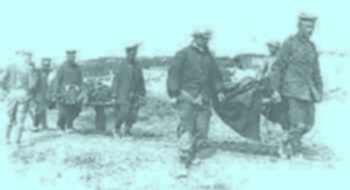The Story of the American Expeditionary Forces |
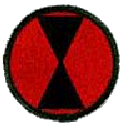 7th Division |
SECOND ARMY
|
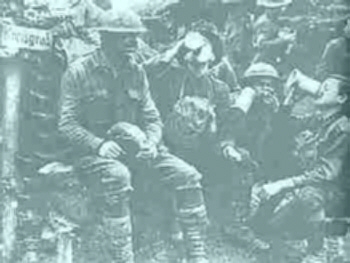
Doughboys in a Captured Enemy Trench
Unidentified Locale

|
Quick Facts
The Second American Army was Formed October 15,1918. for the purpose of holding the line established after the termination of the St. Mihiel offensive, extending from Fresnes-en-Woevre at the northern hinge of the salient to Port-sur-SeilIe, a short distance east of the Moselle River. At first this army was made up from divisions which were worn out and in most instances decimated in the fighting on the Meuse-Argonne front. It was supposed to be a quiet front and affording opportunity for replacement of personnel and re-equipment. 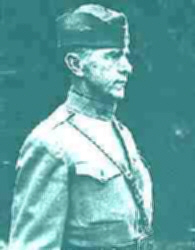 Lieutenant General R. L Bullard, one of the most efficient soldiers in the American Army, was placed in command.Long before the enemy gave any sign that he was on the point of demanding an armistice, Marshal Foch had made plans fur striking a telling blow in Lorraine in the general direction of Metz. This blow was to be struck as soon as the First American Army had succeeded in capturing the great Longuyon-Mezieres railroad, thereby cutting the whole German Army unto two parts. The blow was to fall with telling force on both sides of the great fortress of Metz, pinching of this stronghold without a direct attack. The Americans were to attack in the direction of Conflans, and the Tenth French Army under General Mangin was to strike in the direction of Chateau-Sauna. The object was to isolate Metz and block the enemy forces west of the upper Rhine. Preparations were well under way by November 7th, when the German Armistice Commission crossed the Allied lines. But, inasmuch as Marshal Foch still feared treachery on the part of the enemy, orders were issued in the form of an official telegram dated November 7th, to all forces: "it can happen that the enemy may spread the rumor that an armistice is signed in order to deceive us. There is none. Let no one cease hostilities of any sort without information from the Marshal Commander-in-Chief." The plans for attack, already made, were to be carried out in full, regardless of the armistice rumors, which were flying in all directions. Foch supplemented this order with a dispatch two days later on November 9th to General Pershing urging him to start the Second Army attack immediately instead of waiting for November 14th. The reason for this was very plain. The enemy was falling back in great disorder along the front of the First American Army as well as farther west. His withdrawal on the front of the Second American Army could not be long delayed. Sudden pressure by the Americana on this front would hasten this retreat . . . possibly resulting in a rout. On November 9th, the front of the Second American Army covered 50 kilometers held by four divisions with only 43,000 men. The full strength would have numbered 112,000 men. These divisions from left to right were the Thirty-third Division (Illinois National Guard), Twenty-eighth (Pennsylvania National Guard), Seventh (Regulars) and Ninety- Second (Colored). In reserve were the Fourth (Regulars) and the Thirty-fifth (Missouri and Kansas National Guard) while one brigade of the Eighty-eighth Division (Minnesota and North Dakota National Army) had just arrived at the front. Both the Thirty-third and Twenty-eighth had seen much hard lighting, on the British front, at Chateau Thierry and in the Meuse-Argonne offensive, while a regiment of the Ninety-second had been engaged for a short time in the Argonne Forest. 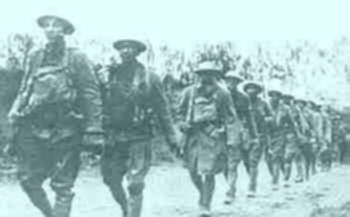 Troops of the Segregated 92nd DivisionOn the 7th of November two companies of the One-Hundred Thirtieth Infantry of the Thirty-third Division made a dashing raid on Chateau d'Aulnois, northeast of Fresnes, destroying an enemy strong point and capturing one officer and twenty-two men. The main attack was set for November 10th. one day ahead of schedule. One regiment of the Ninety-second Division, on the right bank of the Moselle, went over the top at 7 A. M., attempting to drive in the re-entrant salient in the line east of the river. The troops pushed forward a little more than a mile before meeting with serious opposition. Three small woods . . . were occupied. The German resistance, however, soon stiffened and before nightfall the men were suffering heavily under a bombardment of high exp1osives and machine gun fire. The operation netted six prisoners and a slight advance. The casualties numbered 28. Another regiment of this division, west of the Moselle, was unable to advance because of the failure of the attack of the Seventh Division. On the front of the Seventh Division, a Regular Army unit which was under fire for the first time, two companies of the Fifty-sixth Infantry took by assault the formidable Preny Ridge, a key position. Owing to a raking machine-gun lire and the enemy's heavy wire, our troops were unable to mop up the position and ultimately were driven down the slopes again, suffering heavy losses. On the division's left, better progress was made. Here the Americans got as far forward as Mon Plaisir farm, about one mile from Charey. These positions they held at eleven o'clock, November 11th. The Seventh Division had 236 casualties, the majority being suffered on Preny Ridge.  Andrew Wyeth's Subject Sgt. Ralph Cline |
|
Sources and thanks: The primary source of this article is an article written by immediately after the war by John V. Clinnin, Colonel 130th Infantry, and Capt. Arthur E. Hartzell. It appeared in the U.S. Army Signal Corps Official Photographic History. The photos were provided by regular contributors Ray Mentzer and Herb Stickel. MH |
To find other Doughboy Features visit our |
Membership Information  Click on Icon |
For further information on the events of 1914-1918
visit the homepage of |
Michael E. Hanlon (medwardh@hotmail.com) regarding content,
or toMike Iavarone (mikei01@execpc.com) regarding form and function.
Original artwork & copy; © 1998-2000, The Great War Society
